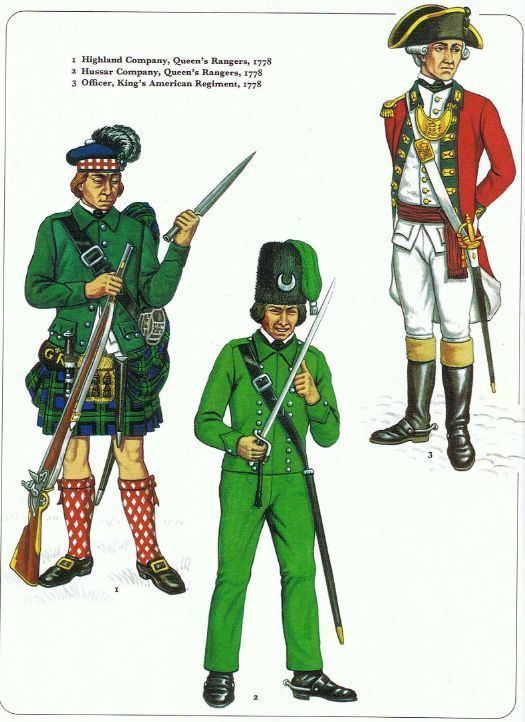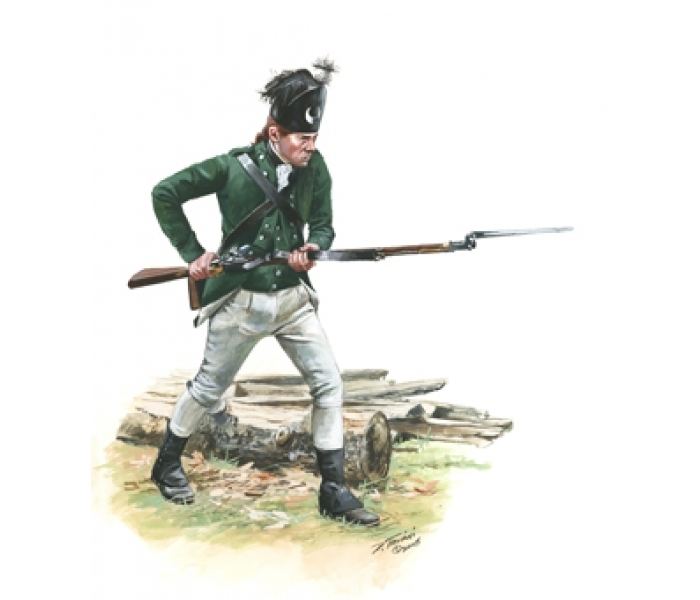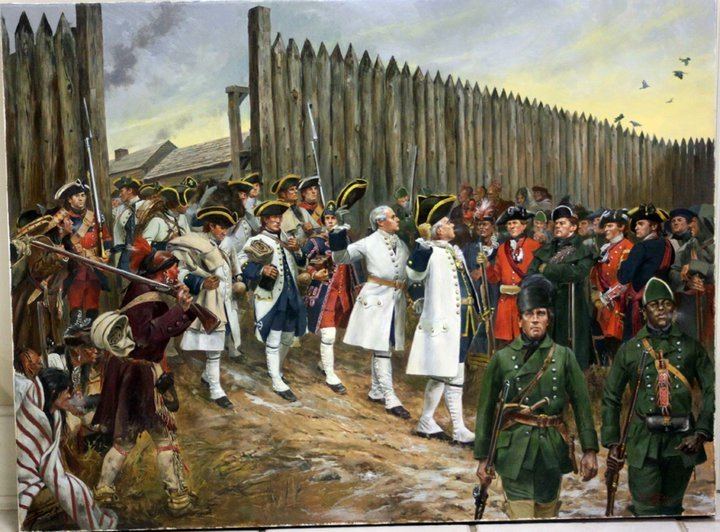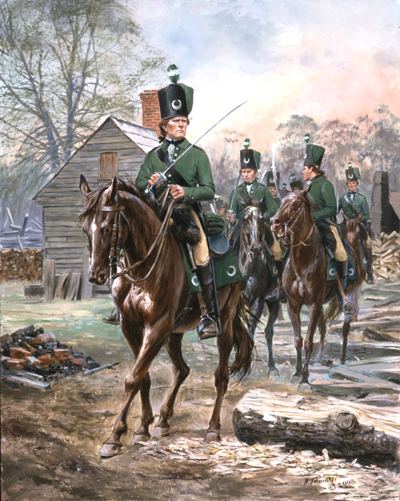Active 1756–1783 | ||
 | ||
Branch British provincial rangers unit Type dragoons (mounted infantry), light infantry, (auxiliary troops) Role special operations, maneuver warfare, guerrilla warfare | ||
Queen s rangers
The Queen's Rangers also, known as, the Queen's American Rangers and later Simcoe's Rangers, were a military unit that fought in the Seven Years' War and on the Loyalist side, during the American Revolutionary War. A small number of Black Loyalists, who had served in the Black Brigade and Butler's Rangers, were later merged into the Queen's Rangers. After the war, they moved to Nova Scotia colony, British Canada, now present-day Saint John, New Brunswick, Canada and disbanded, but were formed again in Upper Canada before disbanding again, in 1802, a decade prior to the War of 1812. The Queen's Rangers also filled the role of partisan hunters.
Contents
- Queen s rangers
- French and Indian War
- American Revolutionary War
- Post war years
- Legacy
- Notable officers
- References

French and Indian War

The origins of the Queen's Rangers began in the Seven Years' War also known in the United States as the French and Indian War, during which France and Great Britain fought for territories in the New World. At first, French-Canadian habitants and their Indian allies were quite effective by employing guerrilla tactics against the British regulars. To counter the French tactics, Robert Rogers raised companies of New England frontiersmen for the British and trained them in woodcraft, scouting, and irregular warfare, sending them on raids along the frontiers of French Canada as Rogers' Rangers. The Rangers soon gained a considerable reputation, particularly in the campaigning in upstate New York around Fort Ticonderoga and Lake Champlain. They also launched a long-range raid to destroy Indian allies in the St. Lawrence valley, gained the first lodgement in the amphibious landings on Cape Breton to capture Louisbourg, and took the surrender of the French outposts in the Upper Great Lakes at the conclusion of the war.
American Revolutionary War

When the American Revolutionary War broke out in 1775, about fifty Loyalist regiments were raised, including the Butler's Rangers, the King's Royal Regiment, and the Maryland and Pennsylvania Loyalists. Robert Rogers again raised a unit, this time in New York (mostly from Loyalists living in Westchester and Long Island), from western Connecticut, and with men from the Queen's Loyal Virginia Regiment. The new unit was named in honour of Queen Charlotte, the wife of King George III. It first assembled on Staten Island in August 1776 and grew to 937 officers and men, organized into eleven companies of about thirty men each, and an additional five troops of cavalry. The unit immediately set about building fortresses and redoubts, including the one that stood at Lookout Place. Rogers did not prove successful in this command and he left the unit on January 29, 1777. The regiment had suffered serious losses in a surprise attack on their outpost position at Mamaroneck, New York, on October 22, 1776. Eleven months later, on September 11, 1777, they distinguished themselves at the Battle of Brandywine, suffering many casualties while attacking entrenched American positions. They were then commanded by Major James Wemyss. On October 15, 1777, John Graves Simcoe was given command, when the unit became known informally as "Simcoe's Rangers".

John Graves Simcoe turned the Queen's Rangers into one of the most successful British regiments in the war. They provided escort and patrol duty around Philadelphia (1777–8); fought in the Philadelphia Campaign; served as rearguard during the British retreat to New York (1778); fought the Stockbridge Militia in The Bronx (1778); fought at Perth Amboy, New Jersey, where Simcoe was captured but freed in a prisoner exchange three months later (1779–80); at Charlestown, South Carolina (1780); in the raid on Richmond, Virginia with Benedict Arnold and in other raids in Virginia (1780–1). The unit surrendered at Yorktown and its rank and file were imprisoned at Winchester, Virginia. Earlier, on May 2, 1779 the regiment was taken into the American establishment as the 1st American Regiment and was later, on December 25, 1782, taken into the British establishment. In 1783, when the war was ended by the Treaty of Paris, the Queen's Rangers left New York for Nova Scotia, where it was disbanded. Many of the men from the unit formed Queensbury, New Brunswick on land grants.
Post-war years

After 1791, when Simcoe was named lieutenant governor of the newly created Upper Canada, the Queen's Rangers was revived to form the core of the defence forces. The leaders were mostly veterans of the American War of Independence. Although there was little military action during this period, the Rangers were instrumental in building Upper Canada through Simcoe's road building campaign. In 1795–6 they blazed the trail for Yonge Street, and then turned to Dundas Street and Kingston Road. They also built the original Fort York, where they were stationed. The Queen's Rangers were again disbanded in 1802 with most of the men joining the York Militia—from which many would take an active role in the War of 1812.

During the Rebellions of 1837, Samuel Peters Jarvis raised a new Queen's Rangers out of the York Militia to fight the rebels, which again disbanded soon after being raised.
Legacy

A Canadian Army Reserve Regiment called The Queen's York Rangers (1st American Regiment) (RCAC) traces its roots to the original Roger's Rangers. In 2012 the Rangers were assigned the perpetuation of three War of 1812 units and received battle honours accordingly.
An Ontario historical plaque was erected in Yorktown, Virginia, by the province to commemorate the Queen's Rangers' role in Ontario's heritage.
